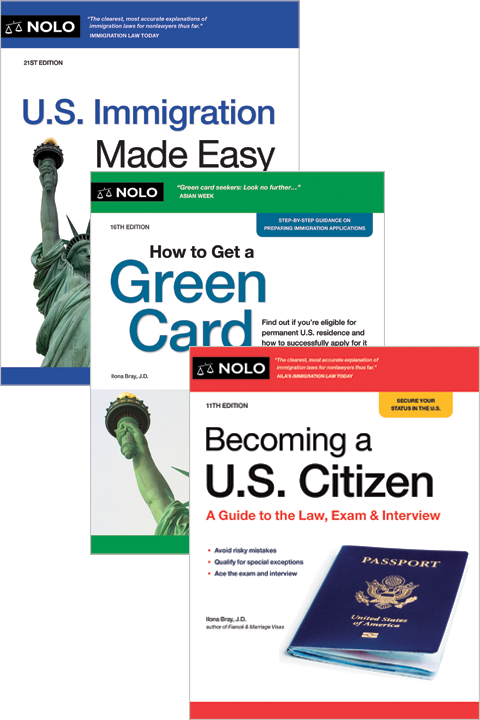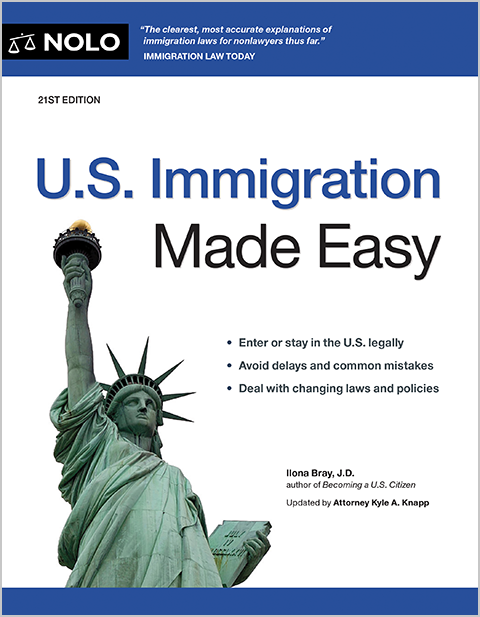Close relatives of U.S. citizens and permanent residents may, in some cases, qualify for U.S. lawful permanent residence on the basis of that family connection.
If you are a foreign-born person with close family members in the United States, they might be able to help you immigrate (receive U.S. lawful permanent resident, also known as a "green card"). Whether you will succeed depends first on what relation the U.S. family member is to you. The closer your relationship, the more rights you have under U.S. immigration law.
Your success at getting a U.S. green card through family also depends on whether your relative is a U.S. citizen or a lawful permanent resident (green card holder). U.S. citizens can bring more distant relatives than green card holders can—their parents and brothers and sisters, for example. Also, U.S. citizens' relatives are, in many cases, allowed to immigrate faster than lawful permanent residents' relatives. This article will acquaint you with the details of:
- the benefits of applying for family-based lawful permanent residence
- certain limitations on family-based residence
- who can immigrate to the U.S. through family, and
- whether or not they're likely to face a long wait to complete the immigration process.
Key Features of Family-Based Green Cards
Here are some advantages and disadvantages to getting U.S. lawful permanent residence through U.S. family relationships:
- Unlike with many other types of green cards, the immigrant applicants' educational background or work experience do not make a difference to their eligibility.
- The primary applicants' spouse and unmarried children under the age of 21 might also be eligible for green cards, as derivative relatives.
- As with all green cards, a family-based one can be taken away if its holder misuses it. For example, a green card holder who makes their primary home outside the U.S., commits a crime, or neglects to tell U.S. immigration authorities of a change of address can be placed into removal proceedings in immigration court. However, one who successfully keeps their green card for five years (or three years if married to and still living with a U.S. citizen all that time) can apply for U.S. citizenship.
Why Can't I Go Straight to Getting U.S. Citizenship Through a U.S. Family Member?
Virtually nobody, no matter how close their family relationship to someone in the U.S., goes straight from having no status to being an actual U.S. citizen. U.S. citizen status is reserved for people who have held a green card first, whether based on family or in some other category.
One thing to separately look into, however, is the possibility of having already gained citizenship automatically, through U.S. citizen parents or even grandparents. See How to Become a U.S. Citizen for more information on this.
If that doesn't work, you'll need to fit into one of the eligibility categories described below; many of which have long waits attached to them, owing to limited availability per year and high demand.
Eligibility Categories of Green Cards Through U.S. Relatives
You might qualify for a green card through U.S. relatives if you fall into one of these categories:
- immediate relative of a U.S. citizen
- preference relative of a U.S. citizen or green card holder, or
- accompanying relative of someone in a preference category.
We'll describe these in greater detail next.
Be aware, however, that no matter the category, legal and procedural problems can arise; for example, if the immigrant is legally inadmissible to the United States, or is already in deportation (removal) proceedings before an immigration judge. (But see How to Get Family-Based Green Card With I-601A Waiver While in Court Fighting Deportation.)
Who Qualifies for U.S. Immigration as an Immediate Relative
Immediate relative status is the best one can hope for, because immediate relatives may immigrate to the United States in unlimited numbers. They are not controlled by the annual limits or quotas that affect the "preference relative" categories (which can create years-long waits for a green card, especially for people from countries where demand for U.S. visas is high, because of per-country limits).
The following types of foreign-born people qualify as immediate relatives:
- Spouses of U.S. citizens. This includes couples who are legally married (regardless of where the marriage took place), as well as widows and widowers of U.S. citizens if they were married to the U.S. citizen for at least two years and are applying for a green card within two years of the U.S. citizen's death. For details on this category, see Marriage-Based Green Cards.
- Unmarried children of a U.S. citizen, under the age of 21, (see the definition of "child" for U.S. immigration law purposes), and
- Parents of U.S. citizens, if the U.S. citizen child is age 21 or older. (Parents of permanent residents have no immigration option through children unless and until those children become U.S. citizens, as described in How Soon Can We Immigrate to U.S. Through Child With Green Card (Lawful Permanent Residence)?)
Stepparents and stepchildren qualify as immediate relatives if the marriage creating the parent/child relationship took place before the child's 18th birthday. Parents and children related through adoption may also, in some cases, qualify as immediate relatives.
Who Qualifies for U.S. Immigration as a Preference Relative
Preference relative status is also a useful way to obtain a U.S. green card, but not often a fast one. Depending on demand, they might well have to wait in line, possibly for years or even decades, before claiming a green card.
You qualify as a preference relative if you fit one of the categories below:
- Family first preference. Unmarried children, any age (but presumably age 21 or older), of a U.S. citizen.
- Family second preference. This category is further divided into two subcategories. Subcategory 2A is for spouses and unmarried children (under 21 years old) of green card holders; and 2B is for unmarried sons and daughters of green card holders, who are already 21 years old or older.
- Family third preference. Married children of a U.S. citizen, any age.
- Family fourth preference. Sisters and brothers of U.S. citizens, where the U.S. citizen is at least 21 years old.
For details on what what to expect in these categories, see How Long Is the Wait for Your Priority Date to Become Current?
Who Qualifies as a Derivative Relative
In the preference categories (but not in immediate relative categories), once a U.S. citizen or resident submits an I-130 petition for a foreign-born relative, that person's spouse and children (unmarried, under the age of 21) will automatically be included in the immigration process (if they wish) as a so-called "derivative" beneficiary.
The U.S. petitioner needs only name them on the I-130 petition to start the process for them. (Eventually, however, they will have to submit their own, independent applications for an immigrant visa or green card to the U.S. consulate or USCIS.)
This derivative benefit applies to:
- Family first preference cases, where a U.S. citizen is petitioning for an unmarried child age 21 or older.
- Family second preference cases, where a permanent resident petitions for a husband, wife, or unmarried child.
- Family third preference cases, where a U.S. citizen is petitioning for a married child.
- Family fourth preference cases, where a U.S. citizen at least 21 years old petitions for a sibling. (This category does not include biological siblings of someone who immigrated through adoption by a U.S. family.)
Also see When Children Can Immigrate to the U.S. With Their Parents as "Derivatives" and Your Relative Had Children After I-130 Approved - Can They Immigrate Too?
Again, though, the derivative benefit does not apply to family of immediate relatives. So, for example, if a U.S. citizen petitions for a foreign-born husband or wife who has children from a different relationship, the U.S. citizen will need to separately petition (file a Form I-130) for any children—which is likely possible only if they qualify as the petitioner's stepchildren.
Getting Legal Help
If you're in doubt about which family members can immigrate, or would like assistance preparing the paperwork and monitoring the application through the long process of gaining approval, consult an experienced immigration attorney.
Talk to a Lawyer
Need a lawyer? Start here.
How it Works
- Briefly tell us about your case
- Provide your contact information
- Choose attorneys to contact you
- Briefly tell us about your case
- Provide your contact information
- Choose attorneys to contact you

